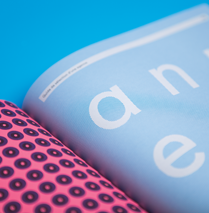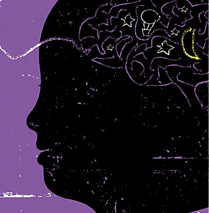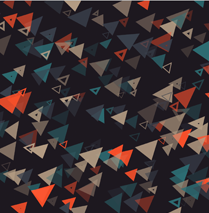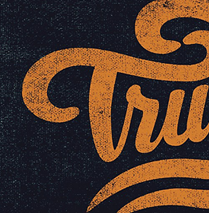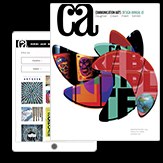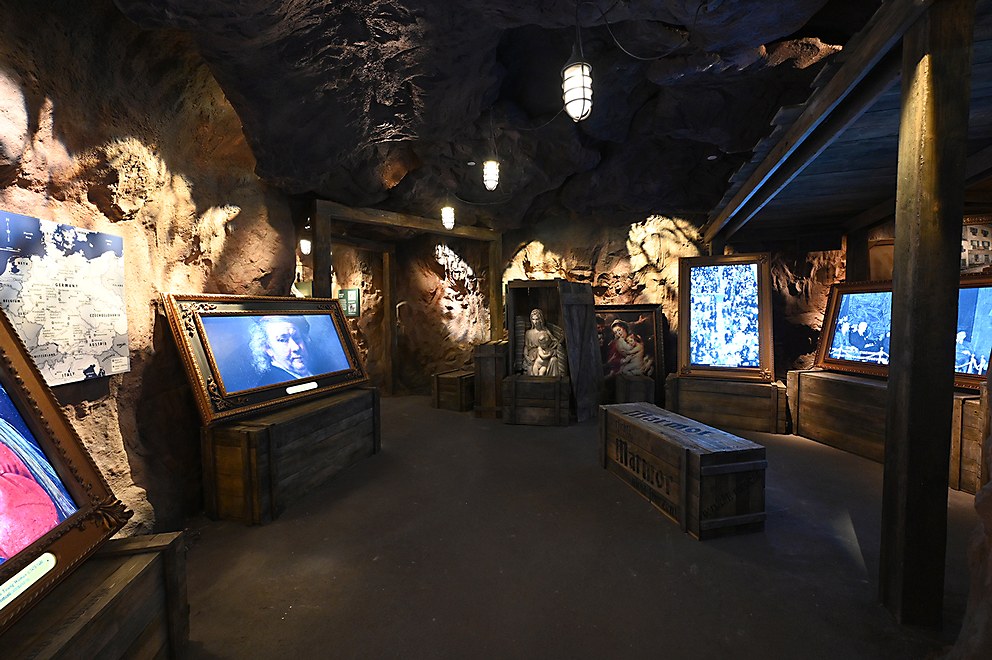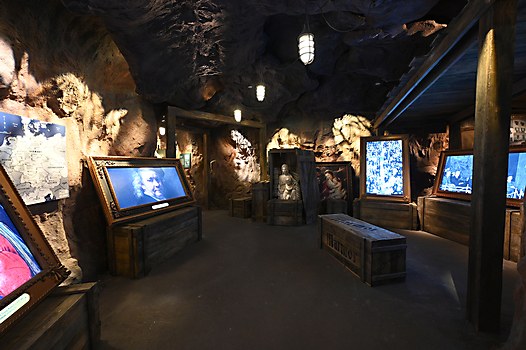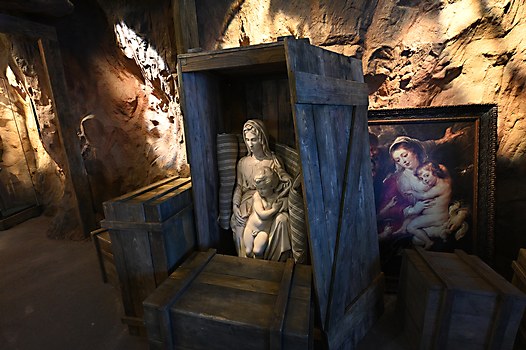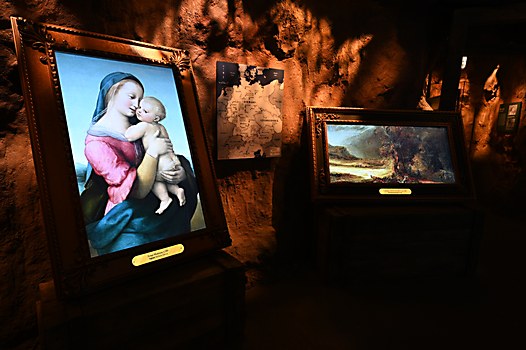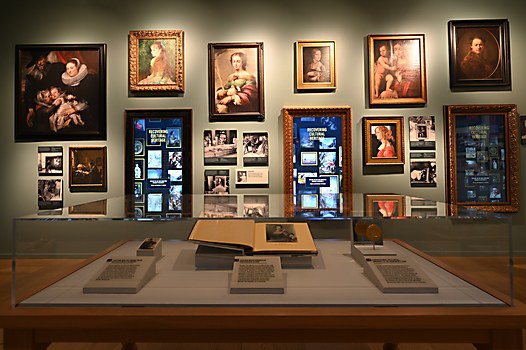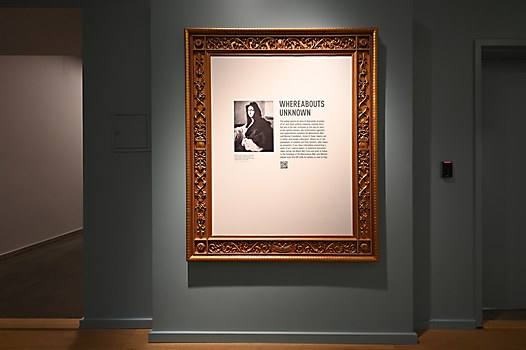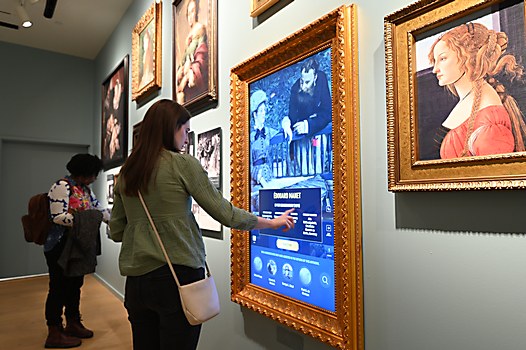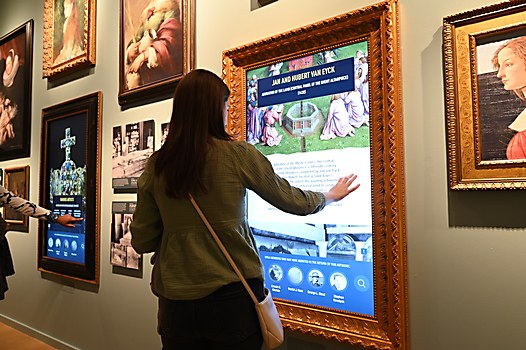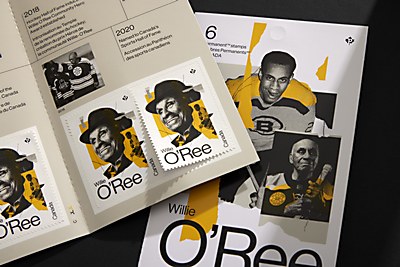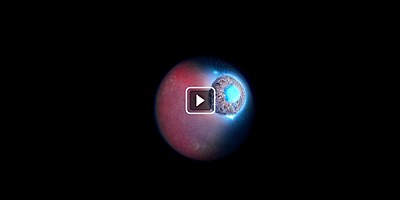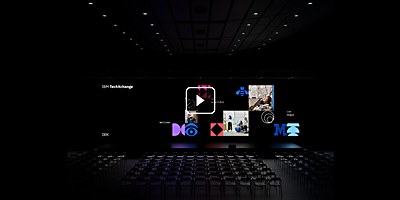Responses by Carl Rhodes, senior exhibit design director and project creative lead, G&A.
Background: While the work we did across the entire National WWII Museum is created for visitors of all ages and backgrounds, its new Liberation Pavilion exhibition specifically focuses on World War II’s aftermath. In many ways, this pavilion is intended for an audience of generations less familiar with the war, because what we learned in the aftermath should never be forgotten. The Monuments Men and Women gallery and interactive experience, for example, reminds us that in the middle of our darkest moments, there is still the opportunity to protect humanity’s treasures for future generations.
The purpose of the Monuments Men and Women gallery specifically relates to the idea of why the United States entered the war, why we fought and what we had to lose. When people think of WWII, they sometimes tend to think of the major battles and cost in human lives. This gallery reminds us that, in the midst of this horror, the Allies also dedicated significant efforts to save and protect many of our most beloved treasures and, in the post-war years, to return those works of art to their rightful owners.
Design thinking: The overall gallery comprises three parts, all of which support the interactive experience and result in impactful storytelling. It was important that when visitors reached the interactive, they were already awed by the incredible scale of the Nazi looting—700,000 objects were recovered from more than 1,000 different repositories—and ready to do their own investigation into the Monuments Men and Women, the nonprofit dedicated to recovering artwork and cultural objects looted by the Nazis.
The experience begins with the Nazi looting of many of the world’s most beloved art pieces to be displayed in Hitler’s idea of a “Führermuseum,” a cultural complex he had planned for in the city of Linz, Austria. Our visitors transition from this into a detailed re-creation of the Altaussee salt mine, where they are surrounded by stacks of stretched canvas paintings and storage crates featuring the recovered artworks—including a beautifully executed plaster replica of Michelangelo’s Madonna of Bruges.
We wanted museum visitors to feel as though they had stumbled upon this cache, finding themselves surrounded by these masterworks. This space was inspired by period photos of the mine interiors where Nazis hid artwork and the temporary storage racks they constructed. The room is compressed on all sides, its walls and ceiling shaped by organic-shaped rock work, bringing the viewer deep within the mine interior. Ornately framed video screens cycle through recovered artworks, and the story of the Monuments Men and Women plays out over multiple screens.
As visitors enter “Restitution,” the culminating room of this experience, they find themselves in what was conceived of as a transitional art gallery, with detailed reproductions of works by great masters—including Matisse, Rembrandt, Renoir, Van Gogh and Vermeer—hung in a salon-style layout. Even the works’ frames were carefully researched to resemble the originals.
This gallery presents just a selection of many artworks that could have been lost forever but were saved. The area houses several interactive touchscreens that enable deeper exploration of the recovered artworks, as well as those still unrecovered, and also gives visitors the opportunity to learn more about the individual Monuments Men and Women. Each artwork is presented with stories of how it was looted or hidden, where it was discovered, and how (or if) it was returned. It is a testament to hope and humanity after so much destruction and reminds visitors of the efforts it took to ensure that these works survived—an effort that continues to this day.
Challenges: It was important that everything, from the salt mine interior to the interactive experience to the art itself, felt as authentic as possible. This meant collaborating closely with Monuments Men and Women and the founder and chairman Robert Edsel to make sure we got this experience right. Edsel and the foundation donated most of the artifacts, and they were prepared to clarify any details we did not get exactly right, including all the information and stories accessible via the interactive experience.
Content and time were also factors, both for the gallery and for our work across the entire National WWII Museum. As you can imagine, we had a variety of topics, themes and personal stories that felt important to include. Determining how to weave these together within the space and the digital experience—and in a way that felt cohesive and connected for museum visitors—was a big challenge.
Favorite details: I am most proud of how the Monuments Men and Women gallery changes the mood and tone from previous spaces in the overall pavilion. This is actually the aspect of the gallery I was most concerned about during the design process, but it worked out.
The first series of galleries are very heavy. The focus is on the enormity and scale of loss. It is a solemn experience for the visitor. Some visitors are brought to tears. But the tone and mood of the galleries shift gradually from these low points. There is a story of hope and what was saved. The galleries become much brighter, and the lighting plays a more prominent role. The stories become more uplifting.
For the interactive, I love the flow of the UX. It presents various levels of depth of exploration for either the works of art or the Monuments Men themselves. Within each category, visitors can browse through thumbnails that represent featured stories and make a selection. From there, we tell the stories through photos, maps and text. Additional search functionality lets users find specific paintings or people by titles, names or roles, such as artist, architect, museum curator, archivist, art historian or educator.
New lessons: We are a team of designers and content creators, not historians. Working directly with the museum’s historians and curators over the years opened my eyes to entirely new aspects of the history, background and implications of WWII—the things that brought the world into the war and continue to significantly impact and shape our world today. It was critical to understand this historical context in order to translate that into a meaningful experience.
Specific project demands: While the space within the Liberation Pavilion was massive, the Monuments Men and Women had a big story to tell in a relatively small gallery footprint. We prioritized the majority of the space for the salt mine, which meant that the Restitution space that housed the interactive experience was smaller. We also know that not every visitor to the National WWII Museum is an art lover, so they would not necessarily be familiar with the artworks. We needed a level of didactic information to explain the work and its origins.
The unrecovered artworks also proved to be an interesting challenge. Those can only be displayed through whatever black-and-white photographs were taken prior to WWII. They are represented by an empty frame near the gallery exit and can also be explored through the interactive.
An aspect that made it easier was working with the Monuments Men and Women Foundation. Any questions we had, the team could answer, and they even donated some of the props found in the salt mine interior.



